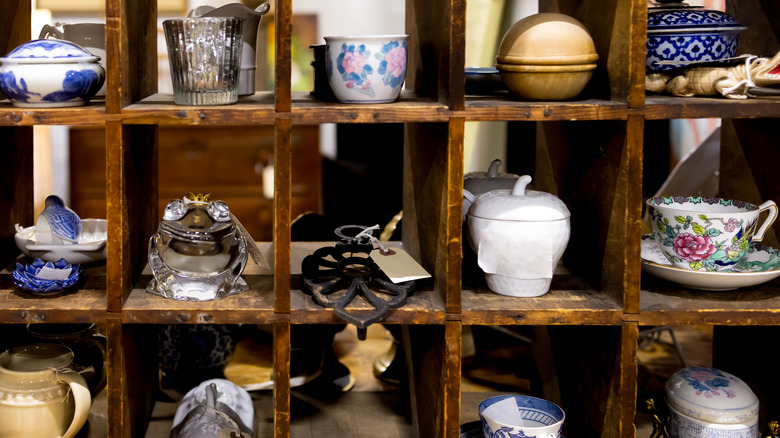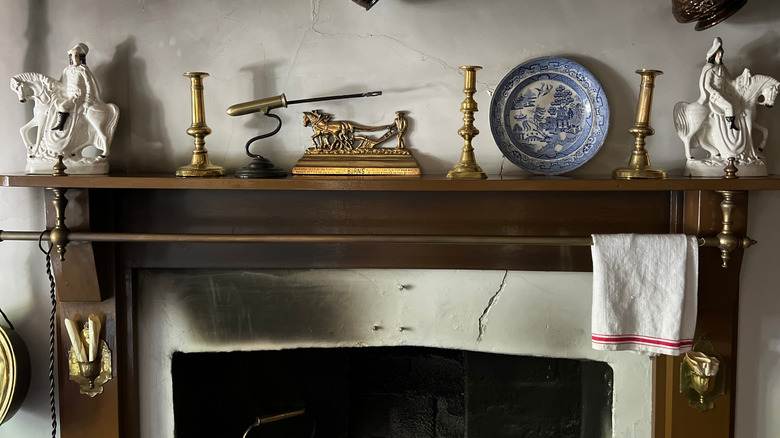The Vintage War-Era Decor You Can Thrift Or Buy At Estate Sales (If You're Lucky) That Is So Valuable
Soldered bullets and casings to create a crucifix, a refashioned brass artillery shell turned decorative jug, or even shrapnel formed into an engraved ring are all examples of highly valuable antiques you might find at an estate sale, if you're lucky. What once was a cobbled-together soldier-made war-era souvenir for family and friends back home can now be a valuable and humbling remnant of the past – and one of the many kinds of items you should snag if you find at the thrift store. These kinds of decoratively repurposed heirlooms are known as Trench Art.
Trench Art refers to a variety of handcrafted items produced during and after World War I, often using functional or disposable wartime materials like bullet casings, shell casings, ashtrays, or other debris refashioned into a souvenir. While not exclusive to World War I, trench art encapsulates a method of repurposing military salvage into art from various countries and time periods that have seen combat. In World War I, it's likely that many of these pieces were produced from workshop troops behind front lines who would have had the time, skill, and equipment to refashion debris into tasteful décor or souvenirs to sell to soldiers. However, some smaller décor pieces were quite literally created in the trenches, though it can be difficult to pinpoint the exact location and craftsman of any one piece. Today, trench art is highly valuable and can offer a glimpse into the lives of those who walked before us.
How to identify trench art
During the war, manufacturing and trade were prevalent, with trench art being a hot commodity at the time. In addition, many soldiers, civilians, refugees, and even prisoners of war used trench art as a creative outlet to pass the time. Some attempted to make extra money through tourist demand, while others crafted items as gifts for those back home. Since trench art was so widespread, many pieces inevitably made their way into thrift stores, estate sales, and antique shops. However, replicas and fakes have also entered the market in recent years– making it difficult to identify authentic, vintage pieces. According to historians, you can identify trench art based on the craftsmanship, material aging, and historical consistency. Items with imperfections, patinas, wear, engravings noting the date, or other kinds of personalization can all clue you into the authenticity of a trench art piece.
Trench art's value is part of why it should be on your thrifting wishlist. For example, a designer purchased a pair of trench art shell casing vases at an estate sale for $80, only to later discover that they were actually worth closer to $1,700. The value of each piece will differ, based on craftsmanship and rarity, but in general, something like a shell-casing vase can be worth up to $500, while a trench art lamp has previously sold for $7,500. So, next time you peruse the aisles of your local thrift or antique shop, keep your eyes peeled for this kind of vintage find, and any other valuable thrift store items.

